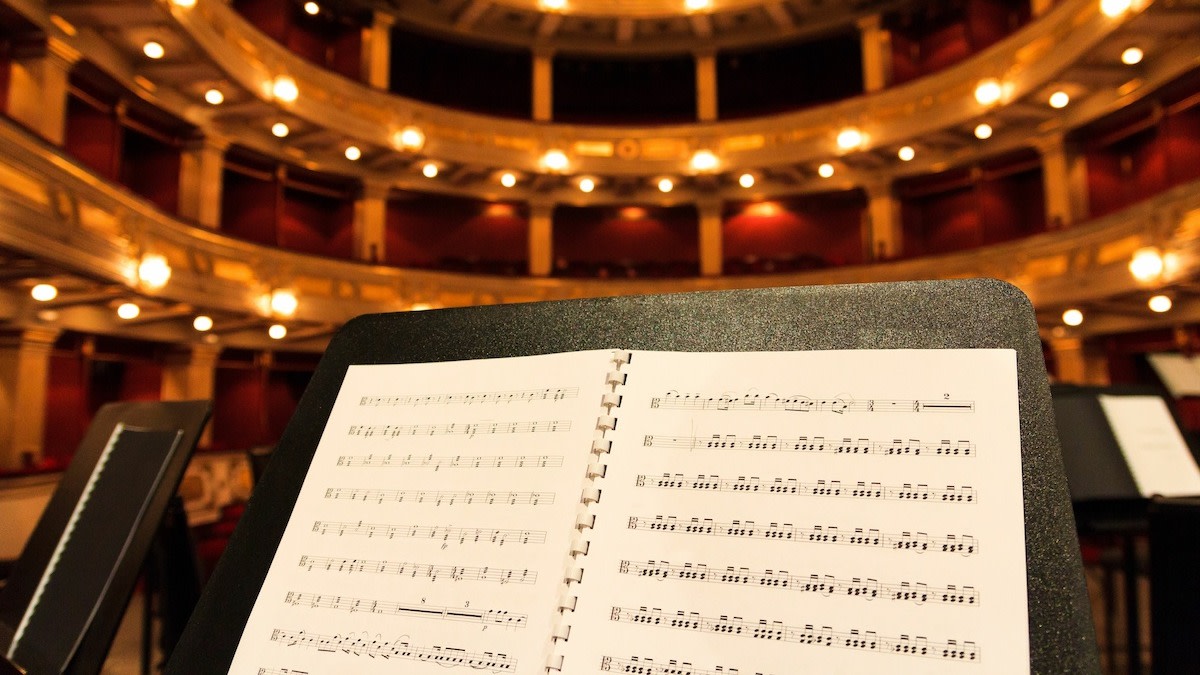What Is an Aria? 5 Examples of Arias in Music
Written by MasterClass
Last updated: Jun 7, 2021 • 3 min read
Classical vocal music appears in many forms, including opera, cantata, and oratorio. Embedded within those styles is a musical form called an aria, which is a showcase for a classical vocal soloist.
Learn From the Best
What Is an Aria in Music?
An aria is a classical music form composed for a solo voice. Arias are generally contained within a larger musical work, such as an opera, and they may be accompanied by instruments or a full orchestra.
A Brief History of the Aria in Music
- 1300–1500s: Arias date back to the Medieval music of the fourteenth century, when the term referred to a specific style of singing. By the sixteenth century Renaissance period, arias were associated with the popular vocal forms of the time, including madrigals and strophic poetry.
- 1600s–1700s: By the seventeenth century, the aria was common in Baroque operas, a trend led by composers such as the Frenchman Jean-Baptiste Lully. Eighteenth-century Classical period composers such as the Italian Alessandro Scarlatti and the Austrian Wolfgang Amadeus Mozart helped build their popular reputations on various forms of arias in their comic operas, dramatic operas, and cantatas.
- 1800s–present: The Romantic era of the nineteenth century and early twentieth century birthed some of the most widely performed arias in classical music. Italian opera composers Gioachino Rossini, Giuseppe Verdi, and Giacomo Puccini wrote operatic arias that are still performed in full length operas and as part of vocal recitals. The German composer Richard Wagner also used arias in his operas. Arias remain an essential element of opera composition, including works composed in the present day.
7 Types of Arias
All arias feature a melody for voice, but different types of arias have different idiomatic qualities.
- 1. Da capo aria: An ornamented form of Baroque aria in ternary form (A–B–A). A primary theme in the tonic key is established in the A section, a new episode appears in the B section in either the dominant key (for major key arias) or the relative major (for minor key arias), and then the main theme returns in a ritornello ("little return") section.
- 2. Aria parlante: A "speaking style" aria closely related to recitative vocal performance.
- 3. Aria di bravura: An aria of bravery, often given to a heroic soprano in opera seria (dramatic opera).
- 4. Aria buffa: A comedic aria frequently performed by a bass or a baritone in opera buffa (comic opera).
- 5. Cabaletta: A multi-section aria popular in Italian opera that functions almost like a standalone song.
- 6. Concert aria: A standalone vocal concerto, often with orchestral accompaniment, that serves as a show piece for a virtuoso singer.
- 7. Arietta: A short form aria contained within an opera, cantata, or oratorio—or as a standalone piece.
5 Examples of Traditional Arias
Arias helped define classical vocal music for centuries. Below are some notable examples of arias from different eras.
- 1. Tamerlano by George Frideric Handel (1719): An aria-rich Italian opera by Handel, a German composer who lived and worked in England.
- 2. Demetrio (Cleonice) by Christoph Willibald Gluck (1742): A Classical-era opera seria with many notable arias.
- 3. "Der Hölle Rache kocht in meinem Herzen" from The Magic Flute by Wolfgang Amadeus Mozart (1791): Known as the "Queen of the Night" aria, this Mozart composition is the epitome of an operatic aria.
- 4. Ah! perfido by Ludwig van Beethoven (1796): A standalone aria performed from the perspective of a jilted lover. Beethoven was not an opera composer, so this is a rare example of aria composition in his canon.
- 5. "Casta diva" from Norma by Vincenzo Bellini (1831): Bellini's opera Norma embraced the cabaletta, a showcase aria for an operatic diva (Italian for "goddess").
Want to Learn More About Music?
Become a better musician with the MasterClass Annual Membership. Gain access to exclusive video lessons taught by musical masters, including Hans Zimmer, Danny Elfman, Timbaland, Sheila E., Itzhak Perlman, Herbie Hancock, Tom Morello, and more.
